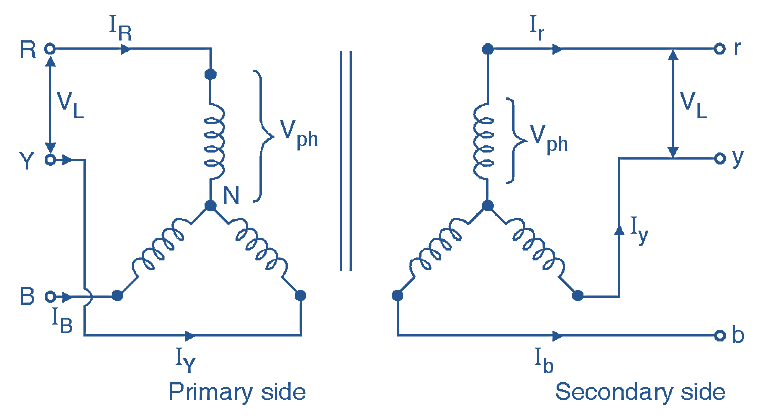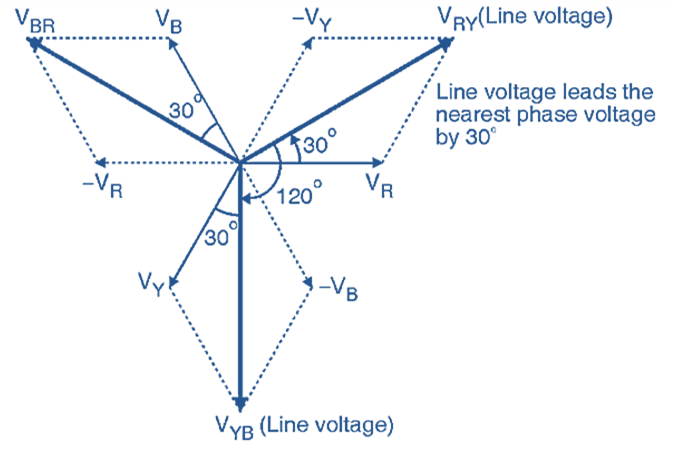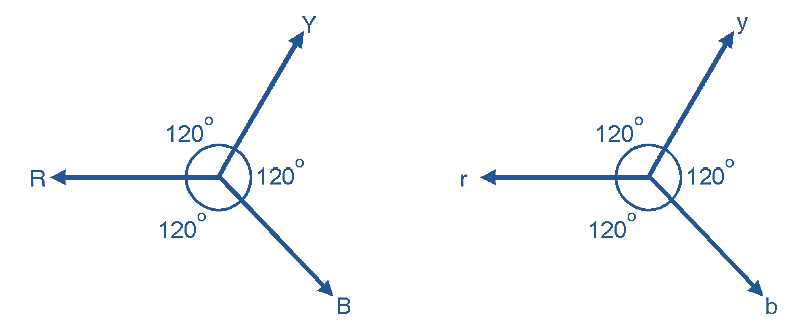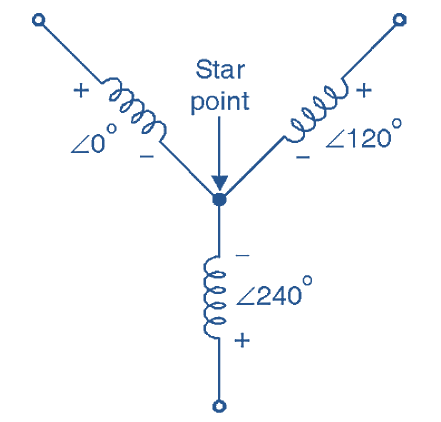
Figure 1: Star-Star or (Y-Y) Connection.
Fig. 1 shows a star-star connection of primary and secondary windings. It is also known as a wye-wye (Y-Y) connection. Usually, star points of both, primary and secondary are connected to neutral. However, such a connection is not so commonly used in practice. Both the primary as well as secondary windings are connected in star. The phase voltage on primary as well as secondary side is \(\frac{1}{\sqrt{3}}\) times the line voltage VL.

Figure 2: Phase relation between the phase and line voltages of a star-star connection.
The phase shift between the line voltage and phase voltages is 30º on both primary and secondary sides as shown in the complete phasor diagram of Fig. 2. However the line voltages on both sides and the primary voltages are respectively in phase with each other as shown in Fig. 4.3.2.

Figure 3: Angular displacement between primary and secondary.
So the angular displacement between primary and secondary is zero as shown in Fig. 3. The star-star connection is most suitable for small high voltage transformers because the number of turns/phase and the associated insulation requirement is minimum. This is because the phase voltage is \(\left( 1/\sqrt{3} \right)\) times the line voltage. For satisfactory operation of Y-Y connection the load has to be balanced type. With unbalanced load, the neutral point gets shifted to make the phase voltages unequal. The problem of neutral shifting is called as oscillating neutral, or shifting (floating) neutral. This problem can be solved by connecting the primary neutral back to the generator neutral. This also eliminates distortions in the secondary phase voltages. This problem can be avoided by another method in which a tertiary winding of relatively low kVA rating is provided.

Figure 4: Winding polarities of a star connection.
Fig. 4 shows the polarity markings of the three windings when connected in star. It shows that the center point of the Y must tie either all (-) or all (+) winding ends together.
Voltage and Current Relations in Star-Star or (Y-Y) Connection of Three Phase Transformer
Let VL1 represent the primary line voltage and VP1 be the primary phase voltage. Then the relation between them is as follows.
\[{{V}_{P1}}=\frac{{{V}_{L1}}}{\sqrt{3}}\]
Let K be the turns ratio of the transformer. Then the secondary phase voltage is given by,
\[{{V}_{Ph2}}=K{{V}_{Ph1}}\]
Where,
\[K={{N}_{2}}/{{N}_{1}}\]
The secondary line voltage is given by,
\[{{V}_{L2}}=\sqrt{3}\text{ }{{V}_{Ph2}}=\sqrt{3}\text{ }{{V}_{Ph1}}=\sqrt{3}\text{ }K\frac{{{V}_{L1}}}{\sqrt{3}\text{ }}\]
\[=K{{V}_{L1}}\]
Advantages of Star-Star or (Y-Y) Connection of Three Phase Transformer
- Due to availability of neutral, it is possible to use it for 3 phase 4 wire system.
- The phase shift between primary and secondary is zero.
- The phase current is equal to line current. So the windings have to carry larger currents. Hence the star-star connection can supply large load currents.
- The phase voltage is \(1/\sqrt{3}\) times the line voltage. Hence the number of turns required to wind the primary and secondary is less. So this connection is an economical one.
Disadvantages of Star-Star or (Y-Y) Connection of Three Phase Transformer
- With an unbalanced load on the secondary, the neutral point gets shifted. This degrades the performance of the star-star connection. This problem can be solved by connecting the primary neutral to the generator neutral.
- Distortion in the secondary voltage can result due to the presence of third harmonic voltage in the alternator output.
Applications of Star-Star or (Y-Y) Connection of Three Phase Transformer
- This type of connection is rarely used in practice.
- It is used only for small high voltage transformers.